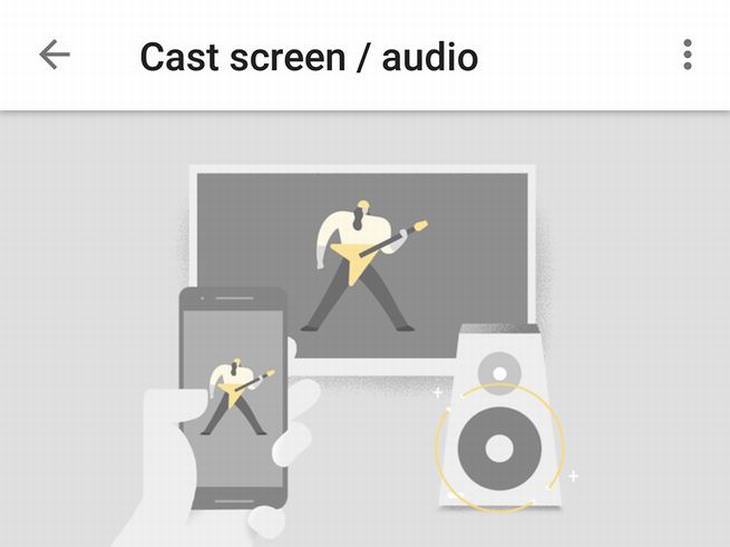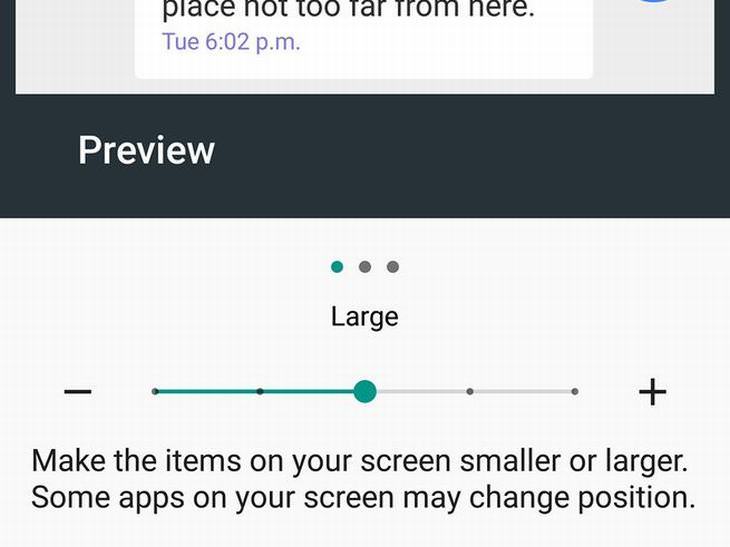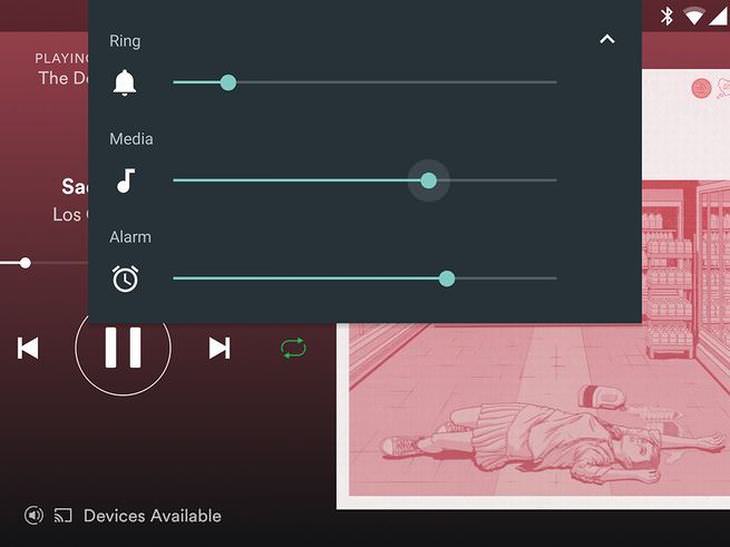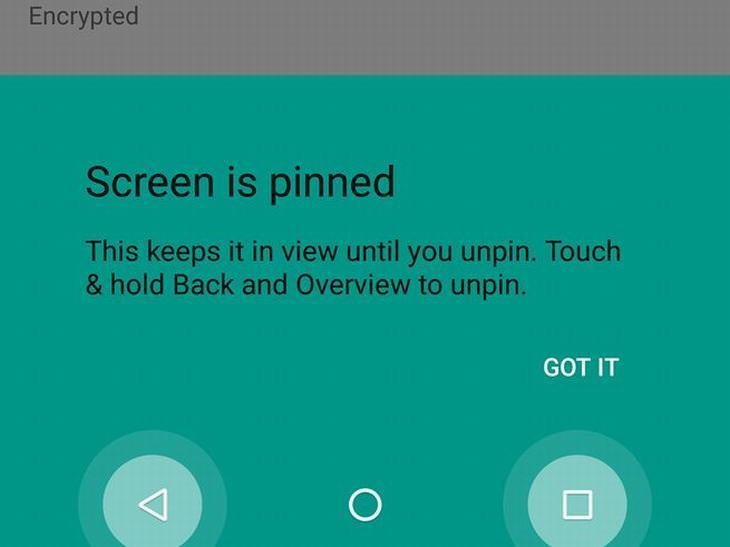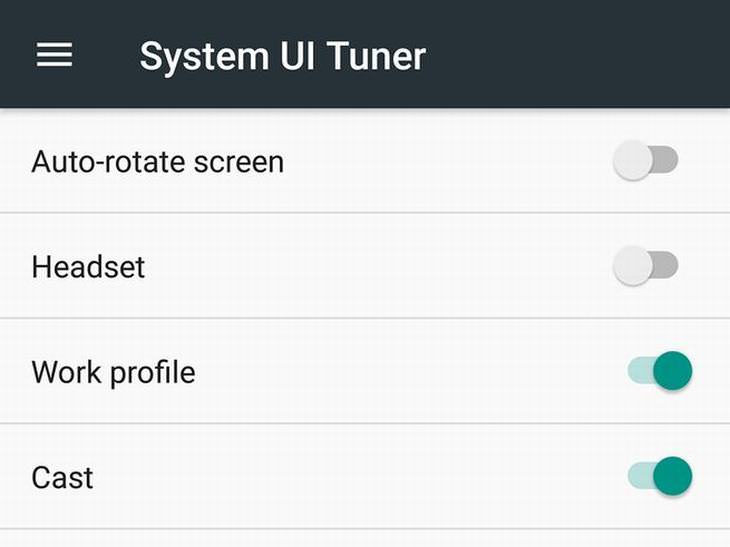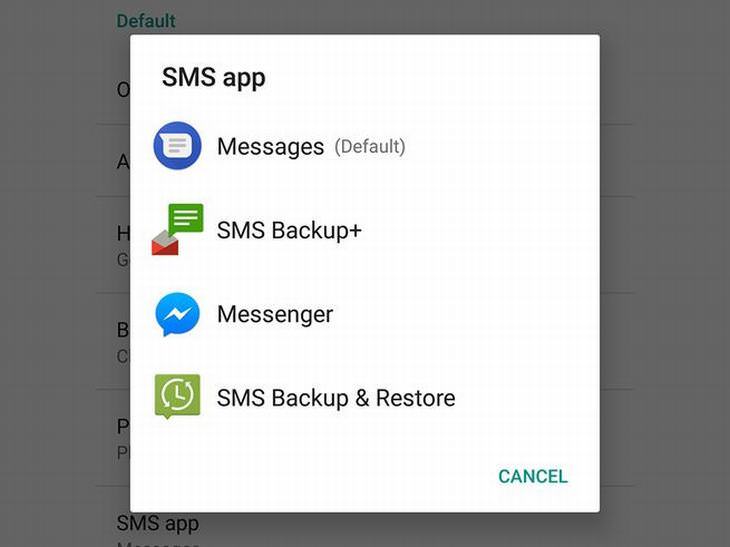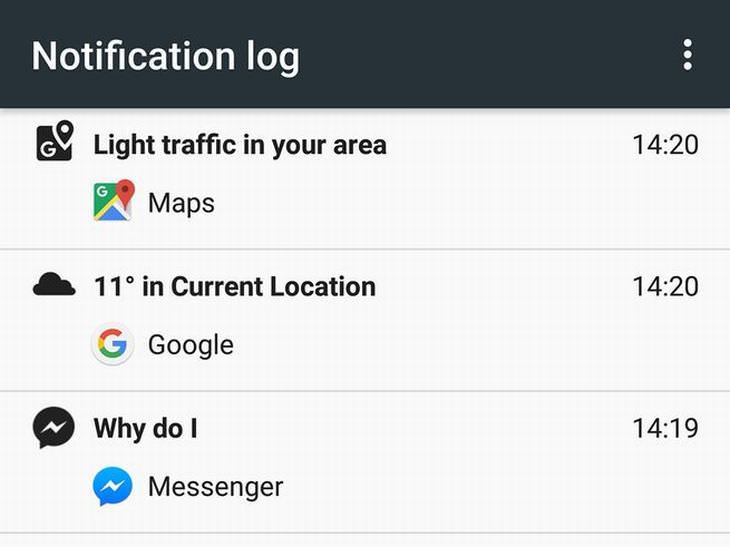1. Cast your Android screen
Google's Chromecast devices have allowed for the streaming of video from movie and TV apps for a number of years, but they can also mirror your phone. All you need to do is point to the mirroring shortcut in the Quick Settings pane, which you can get to by simply dragging down from the top of your phone's screen using two fingers. You'll find the Cast option in the menu.
2. Make text and images more visible
If you want to avoid squinting to see what's written on your phone's screen, you can change the size of text and other items on screen by pointing to the Android Settings app, then selecting the Display heading. In that menu, tap Font to change the default font size. To change the display size, tap Display to adjust the size of on-screen objects.
3. Change volume settings independently
There are many different sounds that your Android phone produces, such as ringtones, notifications, alarms, phone calls. You can adjust the volume levels for all these individual things by tapping on the Settings menu, then selecting Sounds. Once you're there, tap Volume to see individual sliders to adjust the different types of audio.
4. Lock phone borrowers inside one app
It's likely that you'll find a time when you'll have to lend your Android phone to a friend or young family member. It's also likely that you wouldn't want them rooting through your apps and private information, or worse - posting something to one of your social media accounts. To avert such disasters, Android phones have a screen pinning feature, which means that you can set it to run a single app until the phone's lock screen code is entered again.
To set it up, open Settings, then go to Security and enable screen pinning. When you've done so, you can launch the app that your friend or young family member needs to use. Open Overview by tapping the square navigation button below your phone's screen. A pin icon should appear in the lower right-hand corner window for the most recently-opened app. Tap the pin button to pin that app to the screen.
5. Disable the lock screen at home
Your Android phone is kept safe by means of setting up a PIN code or using a fingerprint scan in order for it be unlocked. In certain instances, however, these can become a nuisance, especially when you're at home and there's no threat of anyone stealing your phone. Luckily, there's a way around this. Go to Settings, then tap Security. When you're in the Security menu, tap Smart Lock. This will allow you to disable the lock screen when you're at home (via the trusted places option), as well as when your phone's Bluetooth is paired to a trusted device, such as the stereo in your car.
6. Choose new default apps
Unlike iOS, Android allows you to set the different apps that you use for web browsing, texting and so on yourself. You can set up your default apps by heading to Settings, followed by Apps. Tap the cog icon that appears in the upper right-hand corner. When you do this, you'll see a list of categories that each contain a list of apps capable of taking over default duties. An example is using Facebook Messenger instead of your Android phone's built-in SMS app as your default texting or chatting app.
7. Bring back lost notifications
Sometimes, you might accidentally swipe away a notification on your phone without reading it properly. All you need to do to retrieve it is tap and hold an empty part of your phones' home screen, which will make a screen-adjusting mode come up. Select Widgets, followed by the Settings shortcut. Drag this icon to an empty space on your home screen and drop it in place. A list will appear, which will allow you to select the Notification log. Tap it to open up your phone's notification history.
8. Activate one-handed mode
There's no doubting that today's phones simply continue to grow in size, making them harder and harder to operate using just one hand. If you own a Pixel or Nexus phone, this will be available via Google's custom keyboard, which is the default typing option on those phones. All you need to do is swipe to the one-handed mode via a shortcut. If you have a Samsung or an LG phone, you'll first have to download Google's keyboard, then set it as your default keyboard (as demonstrated in tip 6).
For the latter two brands, you need to open up the keyboard as normal, then tap and hold the backslash key. Drag up to the right-hand icon to enable one-handed mode. The arrow lets you switch this smaller keyboard from side to side, the bottom icon lets you re-position it, and the top icon restores the full-size keyboard.

